I'll be honest, I used to avoid balut like the plague, even though I grew up seeing it everywhere in the Philippines. That changed when I watched contestants on Survivor struggle through eating it as a challenge. I thought, "If they can do it on TV, I can definitely try it at home."
My first attempt was terrible because I overcooked it. But after perfecting this simple 30-minute method, I actually fell in love with this creamy, rich delicacy. Now it's my go-to comfort food when I'm feeling homesick.
This balut recipe takes the mystery out of cooking balut and gives you that perfect street vendor taste right in your own kitchen.

Why You'll Love This Recipe
This authentic balut recipe brings the beloved Filipino street food experience right to your kitchen. Whether you're introducing friends to this cultural delicacy or satisfying your own craving, this simple cooking method ensures perfectly tender balut every time.
The traditional vinegar dipping sauce adds the perfect tangy contrast that balances the rich, creamy texture. It's an adventurous culinary experience that connects you to generations of Filipino food culture, perfect for sharing stories and creating memorable moments with loved ones.
Jump to:
Ingredients
- 2 duck eggs (16-day development or less)
- ½ small onion, finely chopped
- 3 tablespoons cane vinegar
- Salt to taste
- Freshly ground black pepper
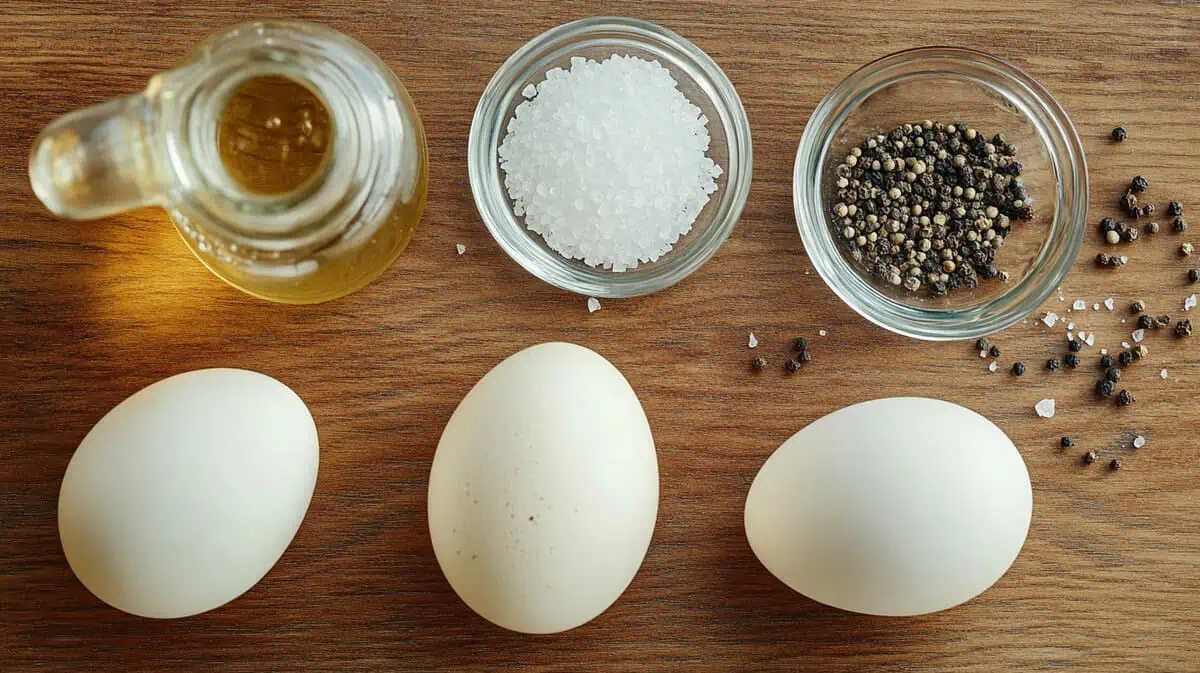
The 16-day aged duck eggs provide the perfect balance between flavor development and tenderness, not too young to lack character, not too old to become tough. Cane vinegar's mild acidity cuts through the richness while finely chopped onions add a fresh bite. Simple salt and pepper enhance the natural flavors without overwhelming this delicate delicacy.
Equipment
- Medium saucepan - for boiling the eggs evenly
- Kitchen tongs - safely handles hot eggs without cracking shells
- Small mixing bowl - for preparing the vinegar dipping sauce
- Sharp knife - cleanly chops onions without bruising
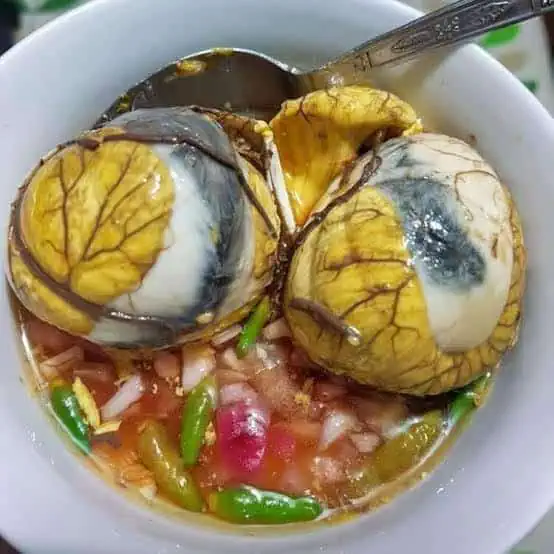
How To Make
- Place a medium saucepan over medium-high heat and add enough water to completely cover the duck eggs once added.
- Allow the water to come to a rolling boil, then use kitchen tongs to carefully lower each duck egg into the bubbling water to prevent cracking from impact.
- Reduce the heat to medium-low to maintain a gentle simmer and cook the eggs for exactly 30 minutes - this ensures the embryo is fully cooked while keeping the texture tender.
- While the eggs cook, combine the finely chopped onion with cane vinegar in a small bowl and set aside to let the flavors meld.
- After 30 minutes, use tongs to carefully remove the hot eggs from the water and place them on a clean surface to cool until they're comfortable to handle.
- Hold the cooled egg upright and gently crack the top, being careful not to damage the contents inside.
- Pour the clear liquid from the top of the egg into your vinegar and onion mixture - this adds extra flavor to your dipping sauce.
- Carefully peel away the remaining shell to reveal the balut inside, then place it in the bowl with your prepared sauce.
- Season with salt and freshly ground black pepper according to your taste preference.
- Serve immediately while still warm for the best texture and flavor experience.

Tips from Lola's Kitchen
- Always use tongs when handling hot eggs - your fingers will thank you
- Don't skip the cooling step; hot balut can burn your mouth and you won't taste the flavors properly
- Crack the egg gently to avoid breaking the yolk inside
- Save the liquid - it's considered the most nutritious part and adds great flavor to the sauce
- Eat balut with good company; it's meant to be a social experience
- Start with 14-day eggs if you're a beginner - they're milder in appearance and taste
Substitutions
- No cane vinegar? Regular white vinegar works, but use 2 tablespoons instead of 3 since it's stronger
- Can't find duck eggs? This recipe specifically requires duck eggs - chicken eggs won't work for authentic balut
- No onions? Try finely chopped green onions or shallots for a different flavor profile
- Want it spicier? Add a pinch of chili flakes to your vinegar mixture
Troubleshooting
- Egg cracked while boiling? Lower the heat next time and use tongs more gently
- Balut too firm? Cook for an additional 5 minutes - some eggs need longer depending on size
- Too salty? Add more vinegar to balance the seasoning
- Liquid leaked out? No worries, just season the balut directly and skip the sauce mixing step
Storage & Reheating
- Fresh balut: Best consumed immediately after cooking while warm
- Leftover cooked balut: Store in refrigerator for up to 2 days in covered container
- Reheating: Steam for 2-3 minutes or microwave for 30 seconds - don't overcook or it becomes rubbery
- Raw duck eggs: Keep refrigerated and use within 3-5 days of purchase
- Vinegar sauce: Can be made ahead and stored in fridge for up to 1 week
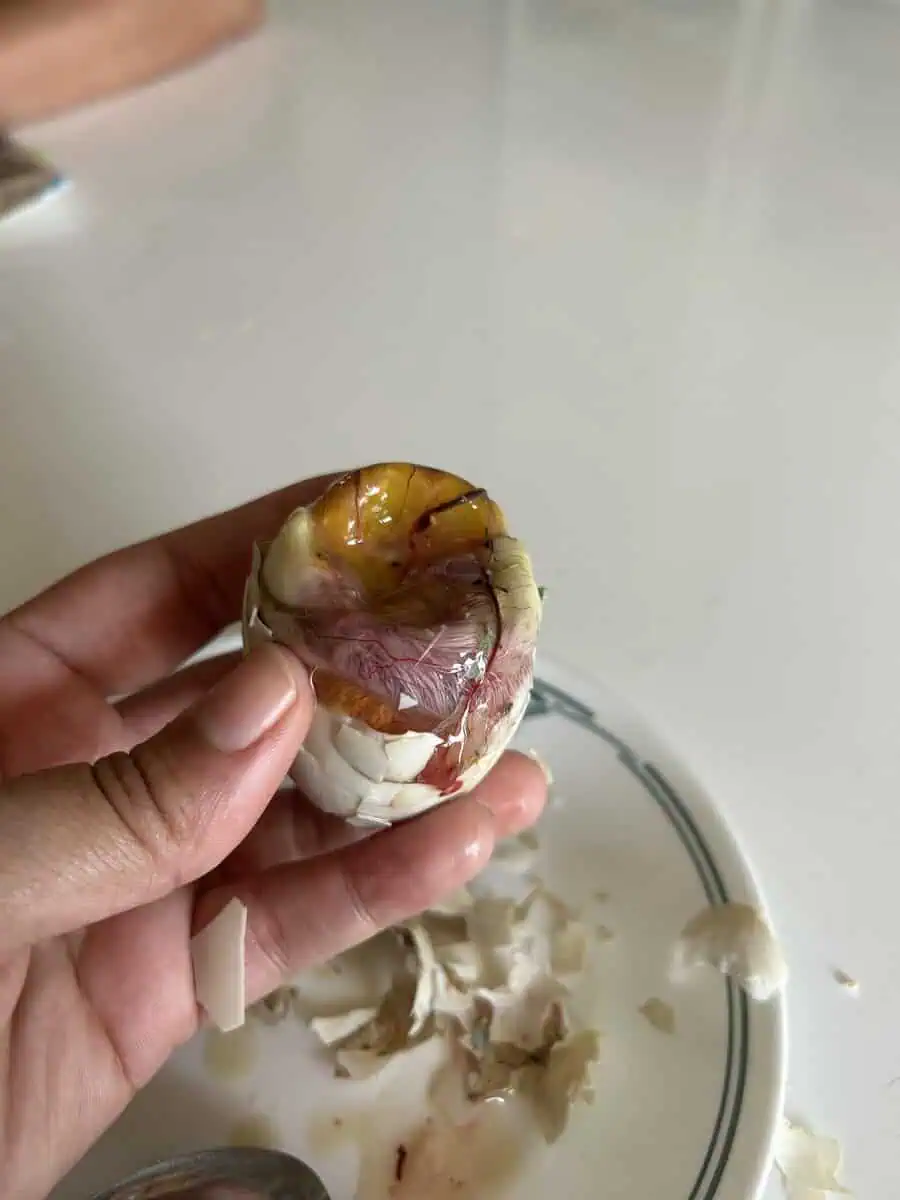
FAQ
What does balut taste like?
Rich, creamy, and slightly gamey, like a cross between chicken soup and soft-boiled egg
Is it safe to eat?
Yes, when properly cooked for the full 30 minutes to eliminate any bacteria
Where can I buy duck eggs for balut?
Asian grocery stores, Filipino markets, or specialty food suppliers
Can I eat the shell?
No, only eat the contents inside after removing all shell pieces
Why 16 days specifically?
It's the sweet spot for flavor development without being too mature for most palates
Do I have to eat the whole thing?
Eat whatever you're comfortable with - many people start with just the yolk
Can kids eat balut?
It's safe for children but consider their comfort level with the appearance first
Related
Looking for other recipes like this? Try these:
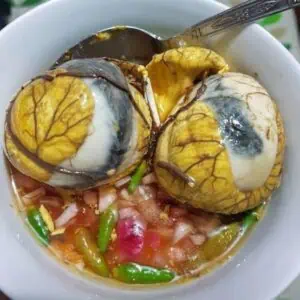
Balut (16 Days) - Traditional Filipino Street Food
Ingredients
- 2 duck eggs 16-day development or less
- ½ small onion finely chopped
- 3 tablespoons cane vinegar
- Salt to taste
- Freshly ground black pepper
Instructions
- Place a medium saucepan over medium-high heat and add enough water to completely cover the duck eggs once added.
- Allow the water to come to a rolling boil, then use kitchen tongs to carefully lower each duck egg into the bubbling water to prevent cracking from impact.
- Reduce the heat to medium-low to maintain a gentle simmer and cook the eggs for exactly 30 minutes - this ensures the embryo is fully cooked while keeping the texture tender.
- While the eggs cook, combine the finely chopped onion with cane vinegar in a small bowl and set aside to let the flavors meld.
- After 30 minutes, use tongs to carefully remove the hot eggs from the water and place them on a clean surface to cool until they're comfortable to handle.
- Hold the cooled egg upright and gently crack the top, being careful not to damage the contents inside.
- Pour the clear liquid from the top of the egg into your vinegar and onion mixture - this adds extra flavor to your dipping sauce.
- Carefully peel away the remaining shell to reveal the balut inside, then place it in the bowl with your prepared sauce.
- Season with salt and freshly ground black pepper according to your taste preference.
- Serve immediately while still warm for the best texture and flavor experience.
Tips from Lola's Kitchen
- Always use tongs when handling hot eggs - your fingers will thank you
- Don't skip the cooling step; hot balut can burn your mouth and you won't taste the flavors properly
- Crack the egg gently to avoid breaking the yolk inside
- Save the liquid - it's considered the most nutritious part and adds great flavor to the sauce
- Eat balut with good company; it's meant to be a social experience
- Start with 14-day eggs if you're a beginner - they're milder in appearance and taste
The Story Behind Balut in Filipino Culture
Balut has been a cornerstone of Filipino street food culture for over 200 years, with its origins tracing back to Chinese traders who introduced duck egg incubation techniques to the Philippines in the early 1800s. The word "balut" comes from the Filipino term meaning "wrapped," referring to how the developing duck embryo is naturally encased within its shell during the careful incubation process.
This protein-rich delicacy quickly became popular among Filipino laborers and fishermen who needed affordable, nutritious food that could provide sustained energy throughout long working days. The high protein content and essential nutrients made balut an ideal portable meal that didn't require refrigeration, perfect for the tropical Philippine climate.
Traditional balut preparation was originally concentrated in Pateros, a small town in Metro Manila that became known as the balut capital of the Philippines. Skilled vendors would carefully incubate fertilized duck eggs for precisely 14 to 21 days, creating different textures and flavors depending on the development stage. The 16-day balut featured in this recipe represents the perfect balance - developed enough for rich flavor but still tender and approachable for most palates.
Street vendors selling balut became an iconic part of Filipino nightlife, with their distinctive calls of "Balut! Balut!" echoing through neighborhoods every evening. This tradition continues today, making balut one of the most recognizable and culturally significant Filipino foods worldwide. The dish has transcended its humble street food origins to become a symbol of Filipino culinary identity, representing the culture's willingness to embrace bold flavors and unique culinary experiences.
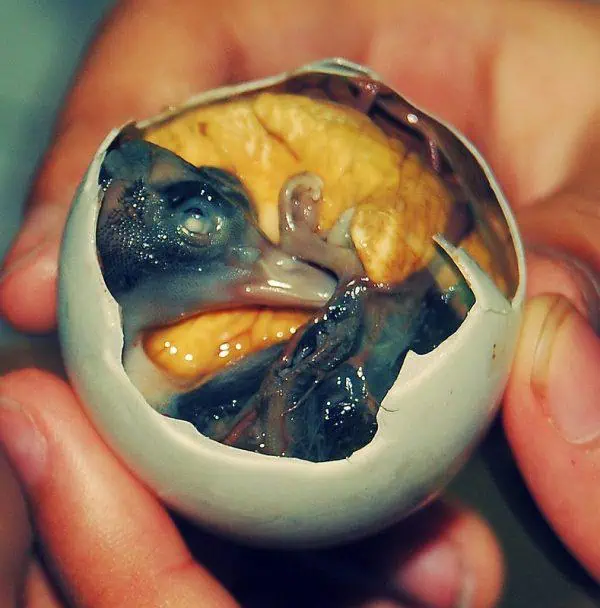


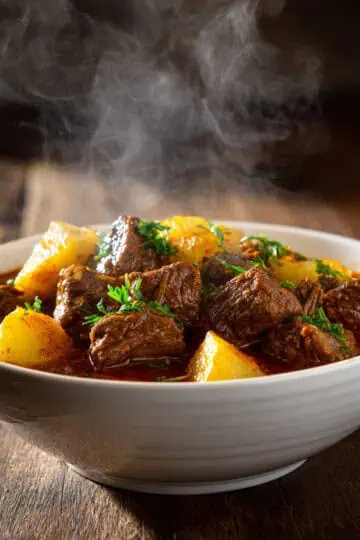






Comments
No Comments